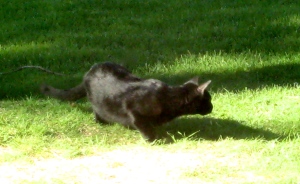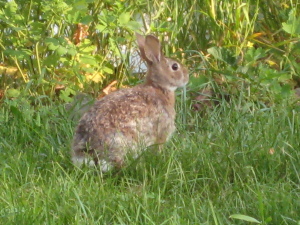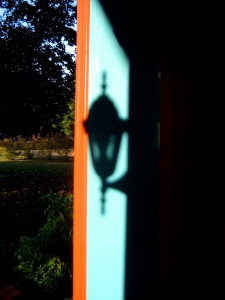When we love our pets we are also loving the animal in ourselves. Our pets do not communicate in words, but they do communicate deeply. Though we may never share a verbal dialogue, our ability to love and be loved by our animal friends may be deeper and more trusting than any human relationship we experience.

– Photo by Jan Ketchel
When there is danger or cause for concern our animal friends alert us long before our own consciousness comes on line. The human animal has been sent to civilized behavior school for centuries, the curriculum of which has trained the human animal to suppress its natural instincts. Such training includes learning to dissociate from feelings and emotions, such as anger or intense joy. In fact, some schools advocate the complete suppression of any emotional expression, even sadness, with its physical concomitant in the release of tears.
The sex instinct is still a taboo topic in families and schools, and though it comes on line for all humans it is very awkwardly integrated and frequently dissociated from satisfying human experience. The hunger instinct has long been expropriated by the marketplace, deeply disconnecting the human from its true dietary knowing. Similarly, the instinct of self-preservation has been confiscated by a gun lobby that can only find safety in weapons.
So what has happened to the animal in the human? It appears to be socialized out of existence, but is it really possible to totally lose connection with our animal selves?
Though our pets can and do provide us with a projected connection to the animal in our nature, the animal inside us—though it may appear to have been tamed into oblivion—is still very much alive, residing in our physical body with all its instincts intact, deeply buried though they may be.
When the animal in us becomes frightened it will instinctively react like all other animals; it will freeze, run, or prepare to fight. These options are signaled by the physical sensations we experience in the form of anxiety, paralyzing fear, racing heart, physical constriction of muscles, and shallow breathing. An acute form of vigilant heightened awareness may also activate, as our animal ability to sense the slightest movement or sound informs our animal self of danger that threatens our lives. This heightened awareness might also be accompanied by extreme calmness, as we prepare for our next move devoid of anxious distraction.

– Photo by Jan Ketchel
In our civilized modern world these physical reactions to threats may be perceived as overreactions, but in spite of all the training it has received the animal in us will automatically react as it always has—instinctively. To the extent that we have been able to suppress our instinctive animal selves, and turn instead to our well-reasoned minds, we may be in a position to act in what is deemed a more appropriate civilized manner when threatened, however, this leads to great internal disharmony and may be detrimental in the long run.
Often, our socialization has been so successful that we don’t even know we have these instinctive reactions, and this is often deemed a sign of maturity. Unfortunately however, more often than not, our completely dissociated animal self takes up residence in the shadow of the unconscious where it lives and acts outside of awareness in the body self, becoming physical symptoms and diseases.
Many bodily symptoms attributed to stress might actually be housing our instinctual reactions to everyday events in our lives. A car quickly approaching from the rear might be experienced as an imminent attack. A criticism from a colleague might trigger rage or terror at the possibility of loss of job/food source. A smile from an attractive person might trigger intense desire or just as easily flip into sheer terror.
Prior encounters with trauma may have put the animal self on constant vigil, seeking to preserve life itself. Approaching the body self with consciousness may be akin to approaching a frightened dog. Consciousness must be patient and gentle, cautious to not excite the defensive aggression of a threatened animal.

in the light of day…
– Photo by Jan Ketchel
Consciousness may be very threatened by the emotional intensity of its instinctive self. Consciousness needs to approach these intensities slowly, over time, allowing itself to not be put off by the depth of its feelings, formerly unknown and suppressed. Consciousness is also likely to encounter its own negative judgments toward its body and the instinctive self it was socialized to reject and disown.
Ultimately, the goal is for consciousness to respect and integrate its animal self, seeking to appreciate its reactions as natural, but also to guide its awareness so the animal does not get caught in assessments not accurate to the modern world. Working collaboratively, the conscious and instinctive selves can inform each other of what is happening in ways that lead to deeper fulfillment of instinctual need, as well as a heightened ability to act based on true needs.
Encountering the animal and welcoming it into the fold of self leads to individuation and wholeness of the entire human being.
Woof!
Chuck
